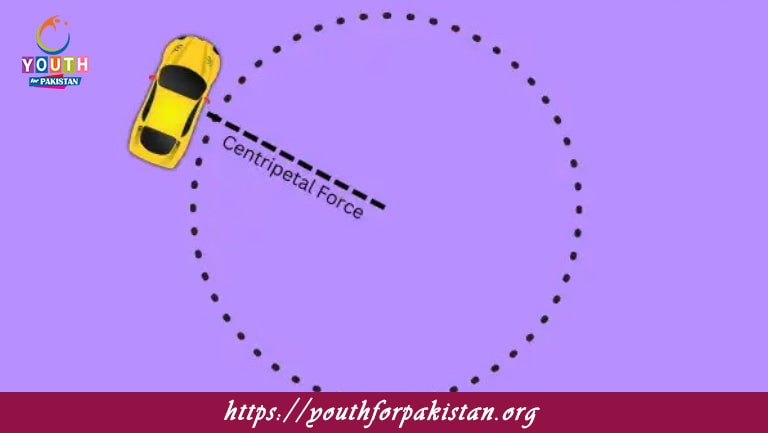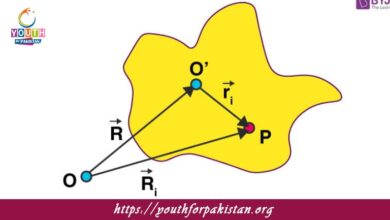Forces Causing Centripetal Acceleration MDCAT MCQs

Welcome to the Forces Causing Centripetal Acceleration MDCAT MCQs with Answers. In this post, we have shared Forces Causing Centripetal Acceleration Multiple Choice Questions and Answers for PMC MDCAT 2024. Each question in MDCAT Physics offers a chance to enhance your knowledge regarding Forces Causing Centripetal Acceleration MCQs in this MDCAT Online Test.
What provides the centripetal force for a car moving in a circular track?
a) Friction
b) Gravity
c) Normal force
d) Tension
In a roller coaster loop, which force provides the centripetal acceleration at the top of the loop?
a) Gravitational force
b) Normal force
c) Friction
d) Tension
What is the formula for centripetal force?
a) F = mgh
b) F = ma
c) F = mv²/r
d) F = kx
For an object in circular motion, if the speed is doubled, the centripetal force will:
a) Double
b) Quadruple
c) Halve
d) Remain the same
Which of the following forces is not responsible for centripetal acceleration?
a) Tension
b) Friction
c) Gravitational force
d) Magnetic force
In a horizontal circular motion, if the mass of the object is increased while keeping speed and radius constant, the centripetal force will:
a) Increase
b) Decrease
c) Remain the same
d) Become zero
For a satellite orbiting Earth, which force provides the centripetal acceleration?
a) Gravitational force
b) Electromagnetic force
c) Frictional force
d) Normal force
If the radius of the circular path is tripled, the centripetal force will:
a) Triple
b) Halve
c) One-third
d) One-ninth
The centripetal force acting on an object moving in a circle is always directed:
a) Tangentially to the circle
b) Outwards from the center
c) Towards the center
d) Away from the center
Which of the following scenarios does not involve centripetal force?
a) A car turning around a bend
b) A satellite orbiting Earth
c) A ball being thrown straight up
d) A child swinging on a merry-go-round
What effect does increasing the speed of an object in circular motion have on the centripetal force?
a) Increases it
b) Decreases it
c) No effect
d) Doubles it
For a car taking a turn on a road, the centripetal force is provided by:
a) The engine power
b) The gravitational force
c) The friction between the tires and the road
d) The car’s inertia
In a conical pendulum, the centripetal force is provided by:
a) Tension in the string
b) Gravitational force
c) Frictional force
d) Normal force
If the speed of a particle moving in a circular path is constant but the radius is increased, the centripetal force will:
a) Increase
b) Decrease
c) Remain constant
d) Become zero
The centripetal force necessary to keep an object moving in a circular path is always perpendicular to:
a) The velocity
b) The acceleration
c) The radius
d) The force of gravity
In a vertical circular motion, at the bottom of the circle, the centripetal force is:
a) Less than the gravitational force
b) Equal to the gravitational force
c) More than the gravitational force
d) Zero
In a spinning amusement park ride, which force provides the centripetal acceleration?
a) The normal force from the ride’s seat
b) The friction between the rider and the seat
c) The gravitational force
d) The tension in the ride’s support cables
For an object moving in a circle, if the centripetal force is doubled, the speed of the object will:
a) Remain the same
b) Double
c) Increase by a factor of √2
d) Increase by a factor of √4
What happens to the centripetal force if the mass of the object in circular motion is halved, while keeping speed and radius constant?
a) It doubles
b) It halves
c) It remains the same
d) It quadruples
In a rotating reference frame, what force appears to act as the centripetal force?
a) Coriolis force
b) Gravitational force
c) Normal force
d) Centrifugal force
Which force provides the centripetal acceleration for a planet orbiting the Sun?
a) Electromagnetic force
b) Gravitational force
c) Tension
d) Frictional force
In an ice skater spinning, the centripetal force is provided by:
a) The ground reaction force
b) The friction between the skates and ice
c) The tension in the skater’s muscles
d) The gravitational force
If the radius of a circular path is reduced to half, while keeping the speed constant, the centripetal force will:
a) Remain the same
b) Double
c) Triple
d) Quadruple
The force that keeps a car moving in a banked curve is:
a) The frictional force
b) The gravitational force
c) The normal force
d) The centripetal force
In a centrifuge, the centripetal force is provided by:
a) The walls of the centrifuge
b) The fluid inside
c) The force of gravity
d) The tension in the rotor
If the centripetal force acting on an object is suddenly removed, the object will:
a) Continue in circular motion
b) Fall to the ground
c) Move in a straight line tangent to the circle
d) Accelerate towards the center
For a given centripetal force, if the radius of the circular path is doubled, the centripetal acceleration will:
a) Double
b) Halve
c) Remain unchanged
d) Quarter
In an object undergoing circular motion, the centripetal force acts:
a) Along the direction of velocity
b) Opposite to the direction of velocity
c) Perpendicular to the velocity
d) In the same direction as the velocity
What happens to the centripetal force if both the mass and speed of an object in circular motion are doubled?
a) It remains the same
b) It doubles
c) It quadruples
d) It increases by a factor of 8
In a vertical circular motion, at the highest point of the circle, the centripetal force is:
a) Equal to the gravitational force
b) Less than the gravitational force
c) Greater than the gravitational force
d) Zero
What role does friction play in a car taking a turn on a flat road?
a) Provides centripetal force
b) Opposes the centripetal force
c) Supplies the gravitational force
d) Balances the normal force
The centripetal force acting on a particle moving in a circle is provided by:
a) The component of the gravitational force parallel to the circle
b) The normal force
c) The component of the applied force perpendicular to the circle
d) The component of the applied force parallel to the circle
A particle moving in a circular path with constant speed has a centripetal force that:
a) Acts tangentially
b) Acts radially outward
c) Acts radially inward
d) Acts perpendicular to the path of motion
In a spinning bucket of water, what prevents the water from falling out when the bucket is inverted?
a) Air resistance
b) Gravitational force
c) Centripetal force
d) Tension in the bucket
The centripetal force required for an object in circular motion is directly proportional to:
a) The radius and velocity
b) The mass and the radius
c) The square of the velocity
d) The velocity and the angle
In a centrifuge, what provides the centripetal force for separating substances?
a) Gravitational force
b) Tension in the rotating arm
c) Frictional force
d) Normal force
If a rotating object’s radius is doubled and its speed is halved, the centripetal force will:
a) Double
b) Halve
c) Remain the same
d) Quarter
When an object is moving in a circle at constant speed, the net force acting on it is:
a) Tangential to the circle
b) Radial and directed towards the center
c) Radial and directed away from the center
d) Perpendicular to the direction of motion
For a body in circular motion, if the centripetal force is increased, the angular velocity of the body will:
a) Decrease
b) Increase
c) Remain constant
d) Become zero
In a spinning space station, what force keeps astronauts pressed against the outer wall?
a) Gravitational force
b) Centrifugal force
c) Normal force
d) Tension
If you are interested to enhance your knowledge regarding Physics, Chemistry, Computer, and Biology please click on the link of each category, you will be redirected to dedicated website for each category.





